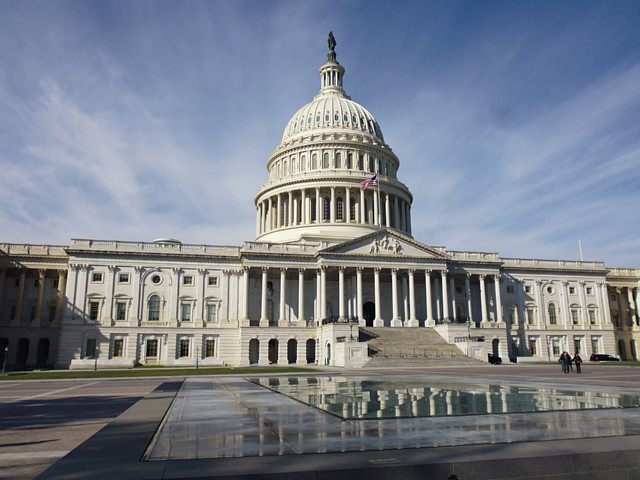2018年1月12日
著者:小野 康英(米国特許弁護士)

著者撮影
米国特許審査基準(MPEP: Manual of Patent Examining Procedure)は、米国特許商標庁(USPTO: United States Patent and Trademark Office)が編纂し発行する、USPTOにおける特許出願の審査の指針である。MPEPは、特許出願手続に関係する制定法だけでなく、裁判所の判例及びUSPTOの審決例、さらには、制定法・判例・審決例についてのUSPTOの見解を掲載する。
MPEP (Ninth Edition, Revision 07.2015, Last Revised November 2015), Foreword
This Manual is published to provide U.S. Patent and Trademark Office (USPTO) patent examiners, applicants, attorneys, agents, and representatives of applicants with a reference work on the practices and procedures relative to the prosecution of patent applications before the USPTO. It contains instructions to examiners, as well as other material in the nature of information and interpretation, and outlines the current procedures which the examiners are required or authorized to follow in appropriate cases in the normal examination of a patent application. ...
このため、MPEPは、USPTOに対する特許出願手続の実務において、必携と言い得る程に有益である。
一方、MPEP自身が同じく前書で注意喚起するとおり、MPEPは法規範性を有さない。
Id.
The Manual does not have the force of law or the force of the rules in Title 37 of the Code of Federal Regulations. (emphasis added)
判例も、MPEPが法規範性を有さないことを明言している。
Ethicon, Inc. v. Quigg, 849 F.2d 1422 (Fed. Cir. 1988)
Consistent with its legislative function, Congress “may leave it to administrative officials to establish rules within the prescribed limits of the statute.” ... In the patent field, Congress has done precisely that by providing that the Commissioner “may, subject to the approval of the Secretary of Commerce, establish regulations, not inconsistent with law, for the conduct of proceedings in the Patent and Trademark Office.” 35 U.S.C. § 6(a). In this type of situation, “the validity of a regulation promulgated thereunder will be sustained so long as it is ‘reasonably related to the purposes of the enabling legislation.’ ” ... []The PTO conducts its proceedings in accordance with regulations set out in Title 37 of the Code of Federal Regulations, and the MPEP. The MPEP states that it is a reference work on patent practices and procedures and does not have the force of law, but it “has been held to describe procedures on which the public can rely.” ... Of course, an agency’s interpretation of a statute it administers is entitled to deference, ... , but "the courts are the final authorities on issues of statutory construction. They must reject administrative constructions of the statute, whether reached by adjudication or by rulemaking, that are inconsistent with the statutory mandate or that frustrate the policy that Congress sought to implement." ... (emphasis added)
この点、裁判所がMPEPの解釈にお墨付きを与えることは勿論ある。以下に、記述要件(現35 U.S.C. 112(1))の"prima facie case"についてのMPEPの解釈を肯定した判例の一節を紹介する。
Hyatt v. Dudas (then Director, Patent and Trademark Office), 492 F.3d 1365 (Fed. Cir. 2007)
As we explained in In re Oetiker, the prima facie case is merely a procedural device that enables an appropriate shift of the burden of production. 977 F.2d at 1445. In the prosecution of a patent, the initial burden falls on the PTO to set forth the basis for any rejection, i.e., a prima facie case. Id. (citing In re Piasecki, 745 F.2d 1468, 1472 (Fed.Cir.1984)). We recognize that it is important to require the PTO to adequately explain the shortcomings it perceives so that the applicant is properly notified and able to respond. Once the applicant is so notified, the burden shifts to the applicant to rebut the prima facie case with evidence and/or argument. Id.A statement of a prima facie case need not be a full exposition on every conceivable deficiency of a claim. See In re Peterson, 315 F.3d 1325, 1330 (Fed.Cir.2003) (holding that any overlap between a claimed range and one in the prior art is sufficient for a prima facie case of obviousness, even if insufficient to render it unpatentable). Rather, its purpose is simply to provide sufficient notice to the applicant to facilitate his effective submission of information. Since the applicant is “in the best position to cheaply provide” information about the purported invention, the PTO’s authority to shift the burden to obtain this information is crucial to ensure that the PTO is not “mak[ing] patentability determinations on insufficient facts and information.” Star Fruits, 393 F.3d at 1284.
In the context of the written description requirement, an adequate prima facie case must therefore sufficiently explain to the applicant what, in the examiner’s view, is missing from the written description. The PTO expressed this requirement in MPEP § 2163.04(I)(B).[] We hold that § 2163.04(I)(B) as written is a lawful formulation of the prima facie standard for a lack of written description rejection. (emphasis added)
一方、裁判所は、MPEPが示した制定法の解釈を否定することもある。
In re Recreative Technologies Corp., 83 F.3d 1394, 1398 (Fed. Cir. 1996)
M.P.E.P. § 2242, which bars review of a question that "has already been decided," does not readily harmonize with M.P.E.P. § 2258, which permits reexamination of “issues previously addressed.” Thus although the M.P.E.P. usefully implements the patent statute, when a section of the M.P.E.P. is inconsistent with the statute it must yield to the legislative purpose.The statutory instruction that a new question of patentability must be raised is explicit in 35 U.S.C. § 303. Reexamination is barred for questions of patentability that were decided in the original examination. That power can not be acquired by internal rule of procedure or practice. The policy balance reflected in the reexamination statute’s provisions can not be unilaterally realigned by the agency.[] To the extent that M.P.E.P. § 2258 enlarges the statutory authorization, it is void. (emphasis added)
なお、法規範性を有さない点は、日本国特許庁が編纂し発行する特許・実用新案審査基準も同じである(注1)。
以上のとおり、MPEPは、USPTOに対する特許出願手続の実務において有益ではあるものの、法規範性はない。究極的には、特許出願手続の法的根拠は、制定法及び判例に求める必要がある。特に、実体的事項に影響を及ぼし得る事項について、判例を引用せず、USPTO審決例のみを引用し、又は、それすらも引用せずに制定法の解釈をしているMPEPの記載事項については注意が必要である。
注釈
(注1)
知的財産高等裁判所平成18年(2006年)9月12日第1部判決(平成18年(行ケ)第10030号 審決取消請求事件)
特許・実用新案審査基準は、特許要件の審査に当たる審査官にとって基本的な考え方を示すものであり、出願人にとっては出願管理等の指標としても広く利用されているものではあるが、飽くまでも特許庁内において特許出願が特許法の規定する特許要件に適合しているか否かの特許庁の判断の公平性、合理性を担保するのに資する目的で作成されたものであるから、尊重されるべきではあるが、法規範性を有するものでないことは明らかであ[る。]竹田稔(元東京高裁知財部総括判事)「審査官・審判官に望むこと」特技懇233号3頁(2004年6月3日)
…特許庁の現行審査基準の「序」には、「審査基準は、出願の審査が一定の基準に従って、公平妥当かつ効率的に行われるように、現時点で最善と考えられる特許法等の関連する法律の適用についての基本的考え方をまとめたものであり、審査における判断基準としてだけではなく、出願人による出願管理等の指標としても広く利用され定着している。」と書かれている。審査基準がこのようなものとして機能してきたことは事実であり、果たしてきた意義は極めて大きい。
その意味では、審査基準に則って審査することは、審査官として必要不可欠である。ただ、注意すべきことは、審査基準はあくまでも特許出願を審査する判断基準であって、法規範ではないということである。特許要件の審査に当たっての行政庁たる特許庁の判断の公正性、合理性を担保するのに資する目的で、具体的な判断基準を示すものとして定められ、公にされているということである。
Next>>第5回:米国特許法の基本~MPEPの法規範性(その2)~
Previous<<第3回:米国特許法の基本~事実問題及び法律問題~
